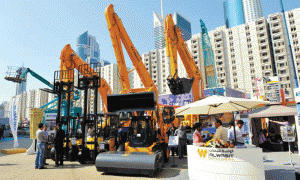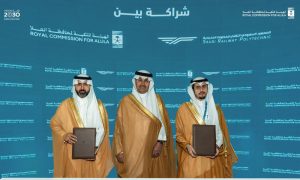US green building market value doubles
A report by construction analyst McGraw Hill has found the very factors which hinder the green-build market in the Middle East have contributed to a 50% growth in the market in the US
 While many US markets have shrunk during the global economic downturn, the sustainable construction market has increased in value by 50%, according to a new report by McGraw Hill.
While many US markets have shrunk during the global economic downturn, the sustainable construction market has increased in value by 50%, according to a new report by McGraw Hill.
Calling it a “bright spot in an otherwise tough economy”, McGraw Hill says the green-build market represented 25% of all new construction activity in the US in 2010, with start-up, green-build projects up 50% overall, compared to 2008 figures.
The actual value is estimated to have increased from US $42 billion in 2008, to a potential $71 billion in 2010.
The trend shows a clear shift from the “commercial mentality” many commentators name as the market’s greatest enemy, particularly in the Middle East, where quick returns and record completion times are key.
But after more than a decade of high investments and low returns, the figures in America are starting to add up.
The key emerging trends are a 13.6% reduction in operating costs, a 10.9% increase in new building values and a 9.9% increase on return on investment (ROI).
The retrofit market is looking equally strong with such projects reducing operating costs by on average 8.5%, increasing property values by 6.8% and increasing ROI by 19.2%.
“In the US the two main drivers of green building are increasing energy prices and market demand. These are followed by market differentiation; public relations benefits; greater health and well-being for occupants; and government regulations, although these are not as critical as other factors mentioned,” said Harvey Bernstein, vice president of global thought, leadership and business development at McGraw Hill Construction.
Worlds Apart
In contrast, it is these factors that are causing the greatest obstacles for the green market in the Middle East. While the market is stringently planned and widely publicised, evidence suggests basic issues still require addressing.
McGraw Hill reported in 2009 that the Middle East market is driven by “master-planned cities, next generation skyscrapers, culturally iconic institutions and luxury hospitality and island developments”.
On the other hand, a significant proportion of growth in the American market has been driven by retrofit projects.
Further to the research conducted in the US, McGraw Hill has also monitored the Asian, European and South American Markets. Finding positive developments in countries which are often ranked the worst polluters.
According to the company, The Chinese government has been “the main driver” of green-building practices.
“The Chinese government has given green building great importance in both China’s 11th Five-Year Plan and in its medium- and long-term plans for science and technology development,” explained Bernstein.
“Some outcomes of this increased focus on green building include launching the Three Star System, China’s Green Building Evaluation Standard,” he added.
“Every market has done well; the sector is growing and awareness is increasing,” commented Ghida Sinawi, operational director of the Emirates Green Build Council.
“If you consider the factors, it’s not going to cost much. The expense of building green is a myth especially as the technologies advance. The future will see more integrated design and everybody working together.”
























